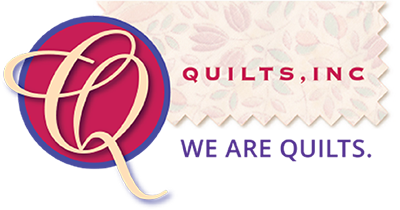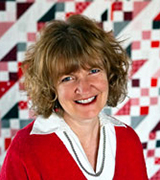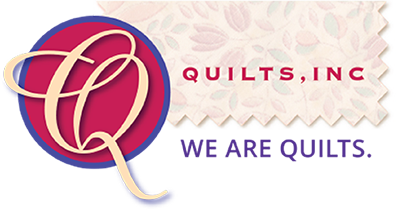Note: This continuing series reposts some of the most memorable columns of Suzy’s Fancy, which ran from 2009-2020. This piece originally ran in 2009.
In a previous column called “Quilting for the Public,” I promised to introduce you to someone who does just that—quilt for the public—using a longarm quilting machine. Before I do that though, it might be a good idea to give a (very) brief primer on longarm quilting for anyone not familiar with it.
Longarm quilting uses a special sewing machine that allows its operator to mechanize the process of combining a quilt top, batting, and quilt back into a finished quilt. First developed in the late 1800s, today’s longarm quilting machines rely on sophisticated technology such as computerized machine heads and laser pointers to produce excellent results in a fraction of the time required by hand quilting or traditional machine quilting. Longarm quilting machines are large—they range from ten to fourteen feet in length—and consist of an industrial sewing machine head, a work table, and rollers on which the fabric layers are placed.
Longarm quilters can do either freehand meandering quilting or pantographs. Meandering designs rely on the quilter’s imagination, rather than any prescribed pattern. A pantograph is a long design that can be placed beneath a plastic layer on the longarm table and traced using the laser pointer on the machine head. A pantograph usually spans the entire length of the quilt and can be repeated in rows to produce an overall design on the quilt top. Pantographs allow a quilt to be finished relatively quickly.
Because of the quick turnaround, affordable pricing, and aesthetically pleasing results, longarm quilting has both streamlined and popularized the quilting-for-hire process and brought a new brand of quilting professionals into the marketplace.
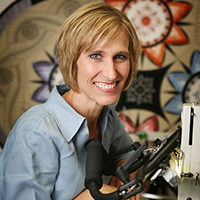
Photo by Jamie Thorpe.
Renae Haddadin is one such professional longarmer, and keeps two machines busy full time. The award-winning quilter, writer, inventor, teacher and occasional marathon runner lives in Sandy, Utah (a suburb of Salt Lake City). Renae began using a longarm quilting machine in 2001—although she started quilting by hand more than a decade earlier.
“I saw a Baltimore Album quilt and fell in love with it. I said to myself, ‘I need one of those!’” recalls Renae. “My older sister, who taught me to quilt, told me that it probably wasn’t such a great idea to begin with a Baltimore Album, so she started me out with a 12-inch square block instead.”
Renae enjoyed making quilts, and perfected her skills during the nine years that she lived in Jordan. When she returned to the United States, her quiltmaking kicked into overdrive. “I started ‘losing it’ when I saw the plethora of wonderful fabrics here,” Renae laughs. “I hated hand quilting though, so I sent my tops to a longarmer to be quilted. By the third quilt, however, I realized that the quilter just didn’t have the same vision for my quilt as I did.”
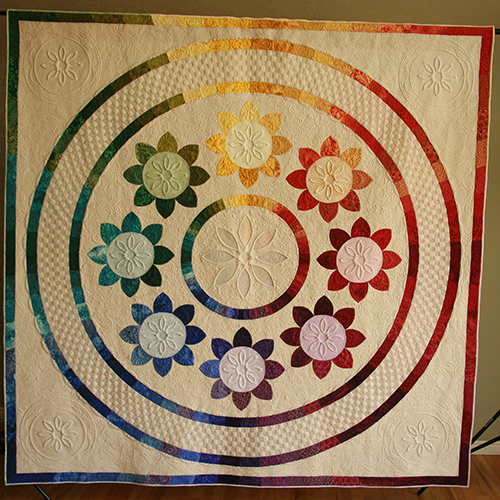
Around that same time, Renae’s youngest child started the first grade. Renae had been thinking of a way she could earn some extra money since her children were all in school, and she decided that she might like to try quilting for the public herself, with a longarm. There were only a couple of problems with this idea: she didn’t have a longarm machine and she didn’t know how to use one.
Not one to be deterred by such hurdles, Renae started looking in magazines for longarm machines, and when she found one that looked good to her, she ordered it. She then set about mastering the machine. Working long hours to become proficient, she began winning awards with her quilts after only nine months. Not long after that, customers started lining up to have Renae quilt for them, and her business was off and running.
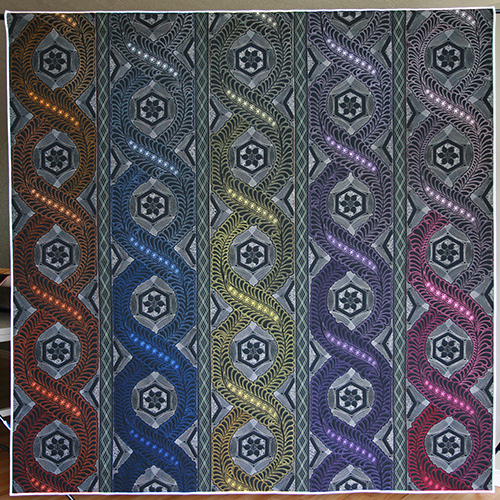
By 2004, Renae had become so adept at using the longarm machine that she began teaching others how to do it. A born problem solver, she invented a series of tools for marking quilts and drafting radiating lines and circles. The tools, known as Renae’s Amazing Rays, Renae’s Mini Rays, and Renae’s Amazing Arcs, can be used either in longarm quilting or hand quilting.
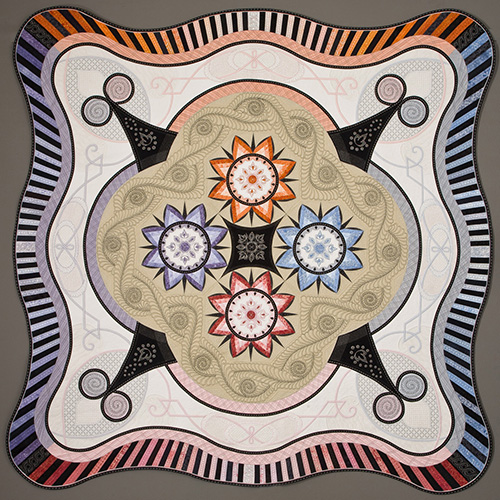
She has released an instructional DVD for the tools and has written a book about them, Amazing Ways to Use Circles and Rays. She writes articles for various publications, travels widely teaching workshops, and provides tips and techniques on her website, (Editor’s Note: in 2021, her site is www.quiltsonthecorner.com.) Renae’s sister now operates one of her two longarm machines.
Although longarming is now Renae’s main source of income, quilting is not just a job to her. When asked if the creative aspect was a part of the process for her, Renae’s response was immediate and emphatic. “Absolutely!” she said. “In fact, I’m not sure which one is more important to me.”
